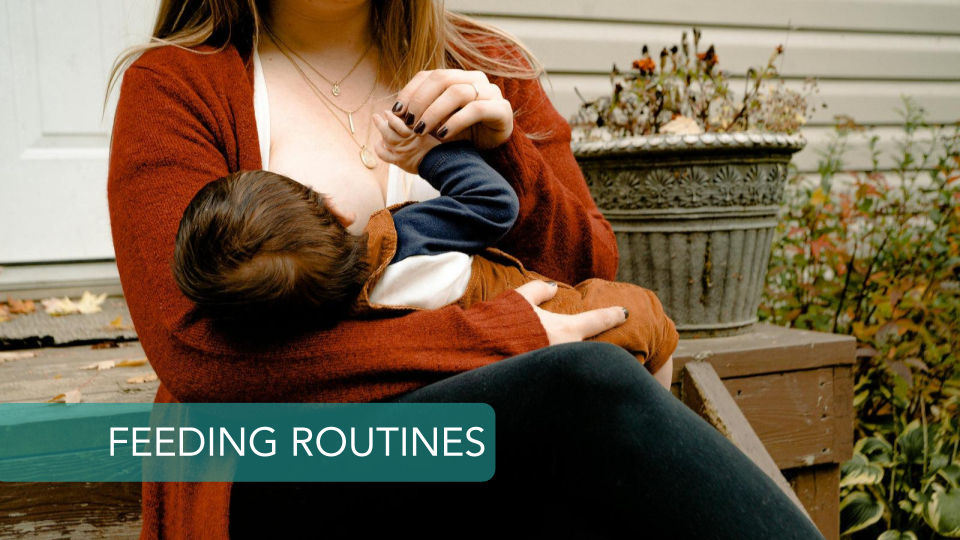5 Month Old Feeding Tips: Routines, Patterns and Milestones
- Carlos Ramirez

- Sep 17
- 3 min read
5 Month Old Feeding Tips
If you’re searching for 5 month old feeding tips, you’re probably noticing big changes in your baby’s routine. Around this time, babies start eating more per feeding, may sleep longer at night, and begin showing early signs of readiness for solids. It’s a fun and sometimes challenging stage, and knowing what’s typical can help you feel more confident.
This guide covers what to expect with feeding routines, how much a 5-month-old usually eats, common milestones, and simple tips to make feeding smoother.

Why Feeding at 5 Months Matters
Feeding at this stage isn’t just about nutrition. Breast milk or formula continues to provide everything your baby needs for growth, but feeding also helps regulate sleep, build comfort, and prepare babies for the transition to solid foods in the coming weeks.
The Mayo Clinic emphasizes that at 5 months, breast milk or formula should still be the sole source of nutrition. Solids are just around the corner, but not quite yet. Using an app like Cubtale can make this easier by helping you log feeding times, track ounces, and see patterns in your baby’s routine. Having these insights gives you peace of mind and helps you stay consistent.
Typical Feeding Routines for a 5 Month Old
Most 5-month-olds are starting to follow a more predictable rhythm, though every baby is different. According to the CDC, breastfed babies usually feed every 3–4 hours during the day, while formula-fed babies may eat every 4 hours. In total, most babies take 5–7 feedings across 24 hours.
Night feedings may decrease around this age, but many babies still wake once or twice to eat. Both patterns are normal. The most important thing is to follow your baby’s hunger cues — rooting, sucking on hands, fussiness, or turning toward the bottle or breast.
How Much Should a 5 Month Old Eat?
At this stage, most babies consume 24–32 ounces of breast milk or formula per day. Some take larger bottles (5–6 ounces) but feed less often, while others still prefer smaller, more frequent feeds.
Growth spurts are common, and during those times your baby may eat more for a few days. As long as your baby is gaining weight steadily, has enough wet diapers, and seems content after feeding, they’re likely eating enough. Cubtale can also help you notice these growth spurts by automatically showing when your baby’s intake increases. Seeing these trends on a chart makes it easier to understand whether your baby is going through a temporary phase or settling into a new routine.
Feeding Milestones at 5 Months
Feeding isn’t just about how much your baby drinks — it’s also about skills that prepare them for solids. By 5 months, many babies:
Hold their head and neck steady.
Sit with support in a high chair.
Reach for bottles, spoons, or food.
Show interest in what parents are eating.
These are early readiness signs, but most pediatricians recommend waiting until closer to 6 months before starting solids.
Tips for Parents
Stick with milk as the main nutrition. Don’t rush solids — milk still meets all needs at 5 months.
Feed on demand. Babies know when they’re hungry and when they’re full.
Encourage gentle routines. Consistency helps babies feel secure, but be flexible.
Keep nights calm. If your baby wakes to feed, keep lights dim and interactions quiet.
Get ready for solids. Let your baby sit with you during meals so they can watch and learn.
Many parents find Cubtale especially useful for night feedings. By logging them quickly on your phone, you avoid guesswork the next day and can see if your baby is gradually reducing night feeds over time.
Common Questions Parents Have
Should my baby be sleeping through the night? Some 5-month-olds do, but many still wake for a feeding. Both are normal.
Is my baby ready for solids? Not yet. Most babies aren’t ready until around 6 months, when they can sit with minimal support and show a strong interest in food.
How do I know if my baby is eating enough? Look for steady weight gain, plenty of wet diapers, and a satisfied baby after feeding.
Looking Ahead
The 5-month stage is a bridge between exclusive milk feeding and the exciting milestone of starting solids. In just a few weeks, your baby may take their first taste of purees or soft foods. For now, enjoy the simplicity of breast milk or formula while watching your baby develop the skills they’ll need for the next step.





Comments